Today I PR’ed at a race—a real race, not a virtual one!
Having had a season of races cancelled due to the coronavirus, I have new appreciation for the act of pinning on a bib, counting down a start with others and crossing a real finish line. Since race directors everywhere are grappling with how to host races in a way that reduces the risk of virus spread as much as possible, I thought I’d share how this race felt safe and well organized, and different but satisfying from a competitive standpoint.
The event was the annual Telluride Rundola, not an ultramarathon or a typical trail race. Rather, it has more in common with a small-town 5K, as it attracts runners and hikers of all levels along with many kids and teens, and many households make the event a family affair.
It’s only a little longer than a mile—but one of the hardest races I do each year.
The Rundola follows a route under the town gondola up a ski slope, starting from the base of the town, around 8750′ elevation, to the gondola station at the top of a mountain ridge, at 10,540′. The extremely steep hill-climb challenge ascends about 1800′ in just 1.3 miles. It should be called the “Hikedola” because only a small fraction of it is runnable.

The view of the Rundola route from the top—1.3 miles and 1800 feet up from town. It’s steeper than it looks!
I thought for sure it would be cancelled. Everything else in Telluride has been cancelled—all the summer festivals, the Hardrock 100, the Imogene Pass Run and the Telluride Mountain Run, plus the 4th of July parade and picnic. But this event, organized by the Telluride Foundation as a fundraiser, decided to go for it. I was grateful the tradition would continue, as I’ve run it the past three years and have come to relish this uphill scramble even though it makes my heart feel as if it’s going to burst out of my chest, but I was skeptical of holding any community event under the circumstances.
This year’s event attracted just over 200 participants, fewer than in years past, but it felt like a good, just-right size—large enough to make it feel like a real community event with some camaraderie, but small enough that crowding never was an issue, at least as far as I could see, at the start, finish or along the route.
Here is how they did it, and how I felt it compared to years past—and perhaps most surprising, why I liked it more than in years past.
During online registration, we were asked to realistically estimate our finish time (not an easy task for first-timers or out-of-towners who can’t fathom an average pace of an extremely slow 30 minutes/mile or even slower in an alleged running race). I conservatively estimated my finish at 37 minutes, because in the past I’ve finished between 34 and 36 minutes, and this week I’ve been coping with a bad back and feeling weak.
The night before the event, each participant received an email with the following:
- a specific start time (start waves started every 5 or 10 minutes, spread out over about 1.5 hours)
- requirement that we agree to be symptom-free & have normal body temperature at the start (this was on the honor system; no one actually checked and took temps of all the participants)
- instructions not to congregate near the start, and not arrive at the start any sooner than 4 minutes before our start time
- requirement to wear a mask at the start line and in any common area around the start/finish; the organizers handed out nifty masks with the event logo to help everyone comply. (We were told to keep our mask on for the first short section of the route, then we could run mask-less after we spread out.)
- instruction to be entirely self-sufficient, meaning, carry any food or water we would need to consume; the event featured no aid stations, no finish-line fest and no awards ceremony (awards will be mailed later)
- requirement to walk/run back down the mountain after the finish, so that participants wouldn’t impact the town gondola (which is experiencing long wait times, since fewer gondola riders are allowed per car)
- no race-day registration allowed; all participants had to pre-register
I showed up shortly before my assigned 8:30 a.m. start time and enjoyed watching an earlier start wave. About 7 to 8 runners would start at a time. Everyone appeared to stand 6 feet or more apart (except couples or family members who clearly seemed to be together).
At precisely 8:26 a.m., I walked to the start and was given my bib, which had a chip timer embedded, and was told I could pick up my complimentary T-shirt after the finish. The whole thing worked like clockwork and was socially distanced. Then I had only about three minutes to stand around with my small group.
You might think that racing with a small pod of people, rather than the whole field, would feel anticlimactic and drain some competitive juices. I heard a few other runners afterward express that feeling. Personally, however, I loved it! Normally I find the start stressful and somewhat demoralizing because so many people rush ahead faster than me, and I have to scramble and sidestep to avoid getting tripped up with others. By contrast, this start felt wonderfully stress-free, and I felt liberated not being near anyone I would race. I had my personal time goal and my own internal motivation; I didn’t need other women close by to push me.
On the ascent, I never got close to anyone, until about three-quarters of the way up when I caught up to a guy and went around him. Being so spread out is much preferable, in my view, to the bunched-up bottlenecks that developed in certain parts of the route in past years during the race. Perhaps if there had been a woman just ahead of me, who had started in my own start wave, then I would have been motivated to push harder to close the gap—but I was pushing as hard as I could sustain, getting lightheaded with exertion on the final pitch.
Mostly, I felt so happy in spite of the physical discomfort of struggling up the hill. The last race I did, before all hell broke loose and everything shut down, took place almost four months ago on March 13, and it was the Skidola—this exact same event, only on snow, skis optional. The next day, the ski resort shut down, followed by restaurants and retail and the governor’s stay-at-home order. I reflected on all that had happened between then and now, and I felt a kinship with the people also struggling up this ridiculously hard hill.
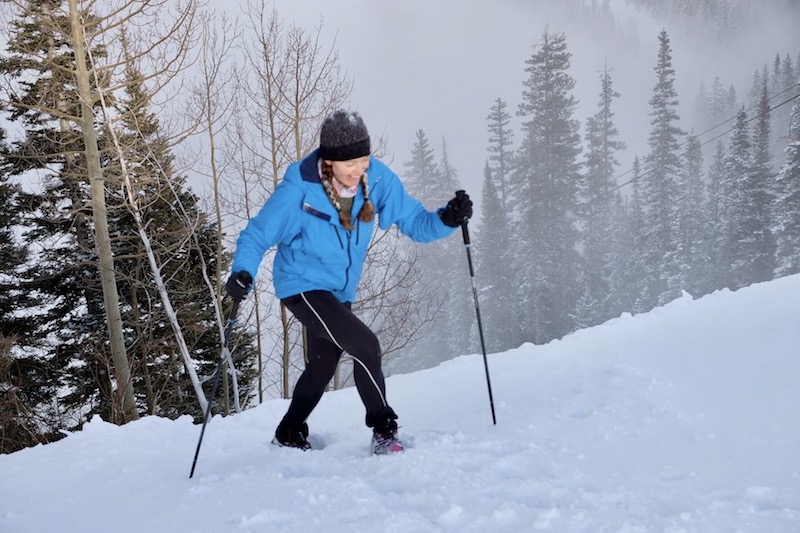
Doing the Skidola—the Rundola’s same route, but in winter with skis or snowshoes optional—back on March 13. So much has changed in just 3.5 months!
If I could give this year’s edition of the race a theme, it would be perseverance. We’re getting through the uphill struggle of life as we know it now.
This one little event taking place gave me a sliver of optimism that local communities will figure out a way to muddle through and adapt to new precautions, even as the number of covid cases continues to rise and our national leadership continues to cause more harm and division than good and unity.
As my lungs burned and my mouth grew parched, I thought about Morgan, also doing the Rundola. He started behind me in a later wave. Could his lungs handle this? All of April, while he recovered from covid viral pneumonia and continued to suffer from hypoxia (low oxygen saturation) and needed supplemental oxygen and extra rest, we wondered if he could ever handle high-altitude hiking again. And here he is, doing it.
More than a race, this event felt like a celebration of his recovery—if he could make it.
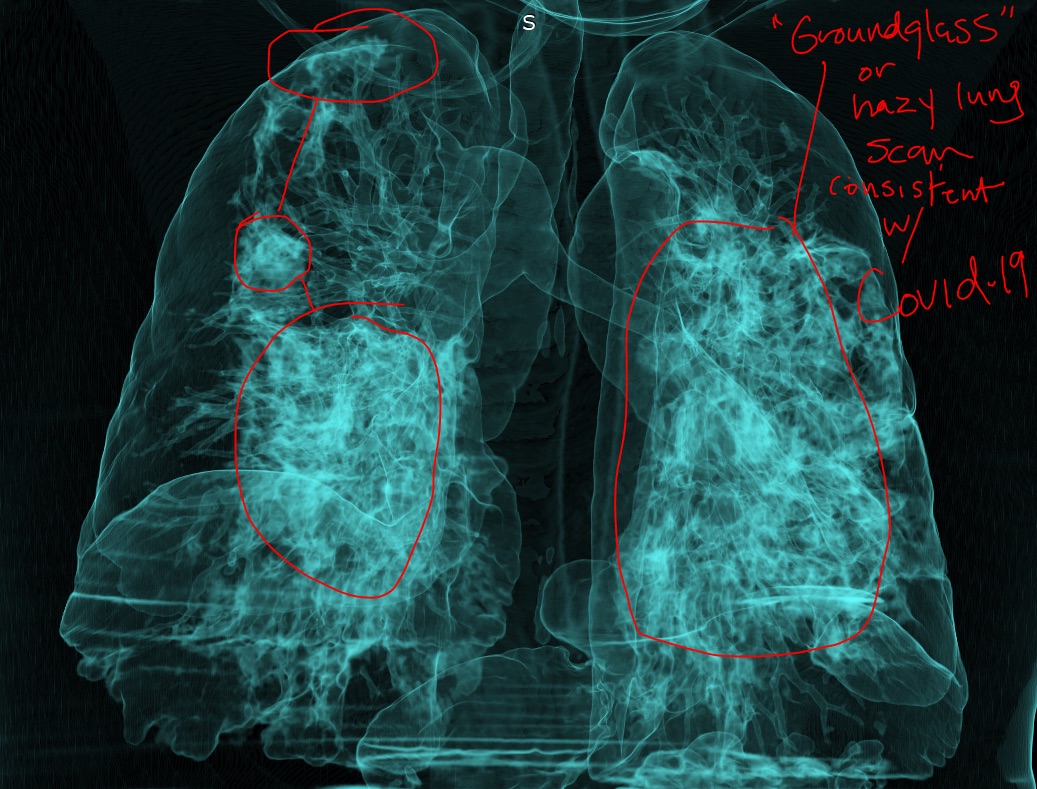
The chest CT scan of Morgan’s lungs from March 29, with extensive bilateral viral pneumonia.
As I scrambled up the final section, where the slope is so steep that I used my hands to bear-crawl up the dirt and grass, I looked at my watch and realized I could beat my goal of sub-36. In fact, I might PR! I pushed harder and tried to crest the hill as if propelled by a slingshot, so I could run through the finish line on the ridge. My time was 33:27, best time in four years. I placed first in the 50 – 59 age group and 8th female overall.
A small number of people stood around the finish and on the summit watching those come up. Everyone spread out and wore a mask when near someone else. I had intended to do some extra running and hiking while waiting for Morgan, but I was beat. I lay on my back and then sat on the ground a ways away from the finish but close enough to spot people cresting the hill. I cheered for each one—again, so happy to see people engaged in this challenge together.
Finally, I spotted Morgan on the final portion of the route. He was smiling, laughing at the ridiculousness of this hill climb. He crossed the finish in 51 minutes. (Full results.)

Morgan finishing the Rundola, all better after covid.
After he caught his breath, Morgan felt good enough that we decided to start on another hike, up the See Forever Trail. We made it partway up, but then storm clouds quickly moved in and we realized we should head down. Ahh, rain, another reason to celebrate!
We slowly jogged back down the mountain to the start, near the base of the gondola, and I collected my shirt and mask. The mask with the race logo is very 2020.
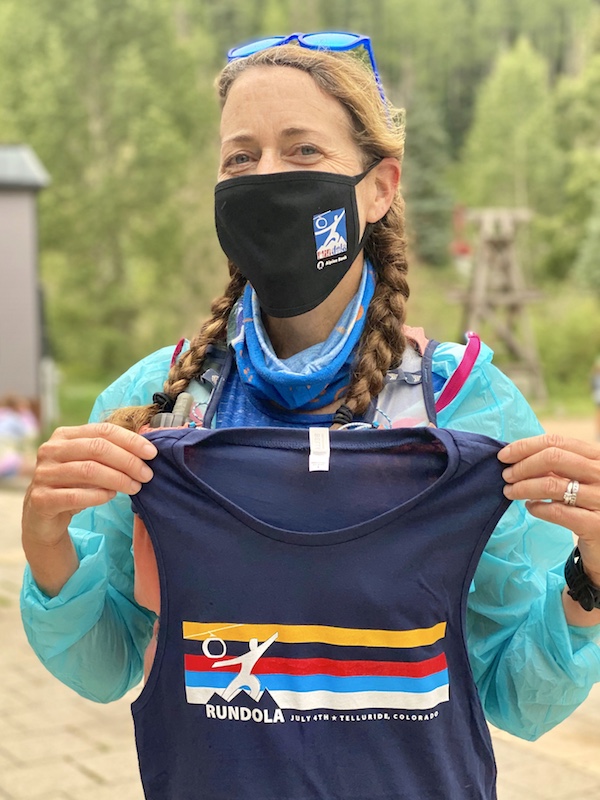
The Rundola mask & shirt—keepers!
Today’s event made me hopeful that other communities could similarly put on small 5K/10K races, if the entrants number were capped and wave starts used, along with all the other precautions the Rundola took. The Rundola route has the advantage, however, of not attracting spectators along the way due to the difficulty of the terrain. Putting on a road race through city streets would challenge organizers to discourage spectators from congregating along the sides. Perhaps that’s one more reason trail races are better than road—fewer people along the way!
In any case, I’m grateful for the opportunity to experience this event again this year, in the midst of unprecedented challenges, and I’m grateful to the Telluride Foundation workers and Cath Jett of CJ Timing who made it all work. It wasn’t the same as a traditional race, but in some ways it was better.
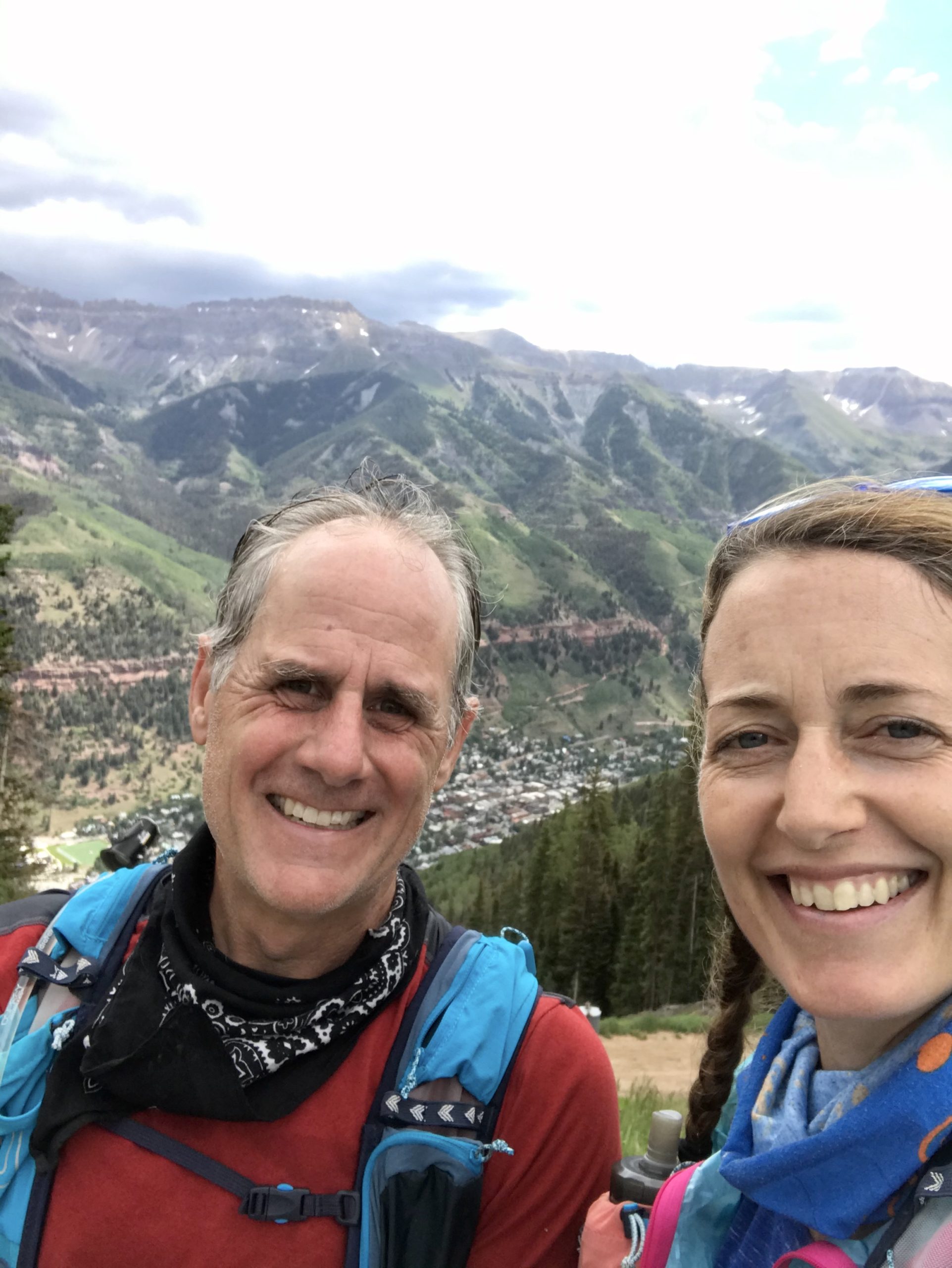
Going back down the mountain after the race, with town below.
How is your summer running going? Are you thinking about training to achieve a goal this fall or winter? Get a copy of my book, The Trail Runner’s Companion: A Step-by-Step Guide to Trail Running and Racing, from 5Ks to Ultras, full of information & inspiration so you can effective self-train!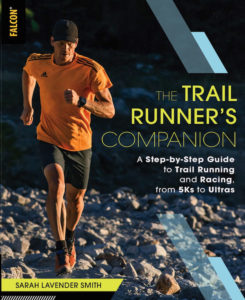

[…] Sarah Lavender Smith: How to put on a trail race during a pandemic. […]